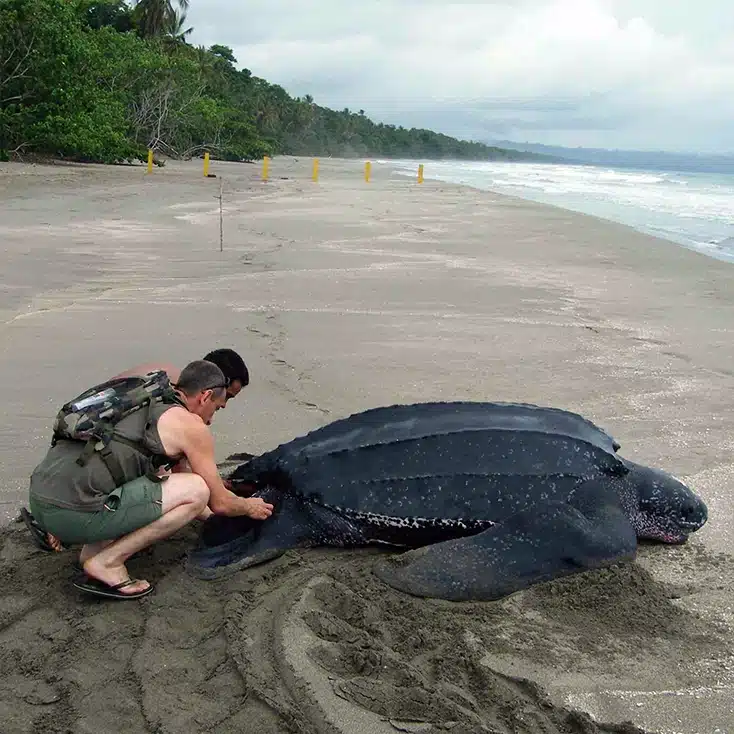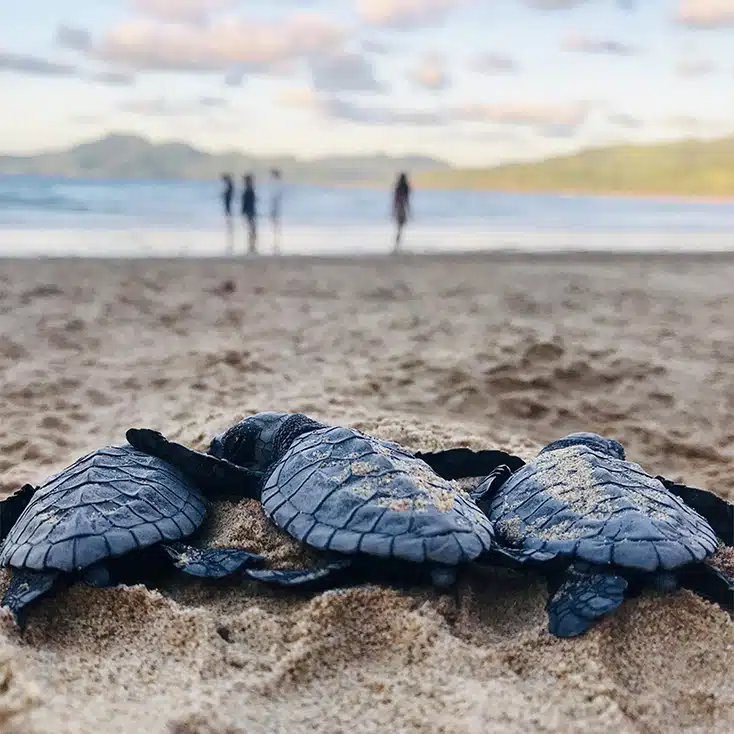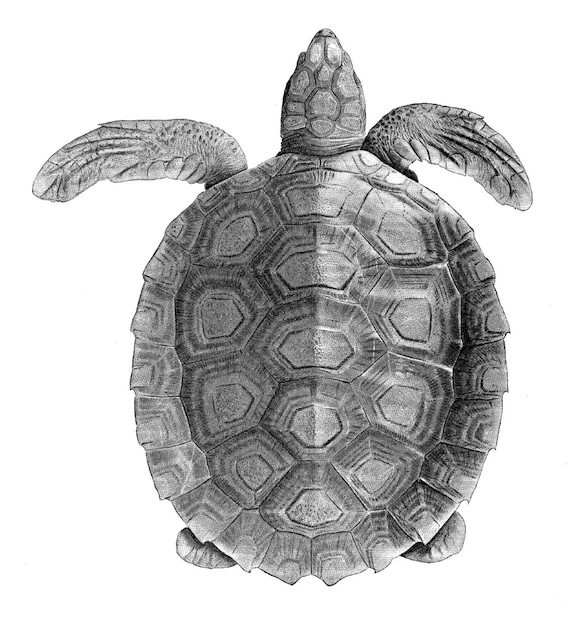There are 7 living species of Sea Turtles left in the world. Green, Hawksbill, Leatherback, Flatback, Loggerhead, Kemp Ridley and Olive Ridley.
Feeding, Habitat, Anatomy, Reproduction, Evolution, Predators, Distribution, Social Structure and more information about of Sea Turtles.
There are significant efforts devoted to sea turtle conservation, but we all can contribute keeping the oceans without garbage and plastics.
Introduction to Sea Turtles
There are seven species of sea turtles in the world distributed in the tropical regions of the ocean; six of them are in danger of extinction. These reptiles have in their DNA more than 200 million years of history and evolution, and that is just one of the reasons why they are so essential to the biodiversity and the life on the planet.
They belong to the class of “Reptilia” and the order “Testudines,” which divides into two families, “Cheloniidae,” which groups six species and “Dermochelyidae,” that has only one species.
Sea turtles have exceptional characteristics and abilities that no other marine organism has. Thanks to the shell that covers most of their body, predators do not choose them as a common prey. The size of some species as the leatherback sea turtle reaches between six and nine feet long and a great thickness which is also a reason that deters many marine enemies. For example, the largest specimen found of this species had three meters long. Additionally, this is the only sea turtle that does not has a hard shell. Instead, it has bony plates under a soft leathery tissue.
Unlike birds, mammals and prehistoric reptiles whose skins have feathers or hair, sea turtles have a sort of scales that give them a unique skin texture.
They do not usually form groups to carry out their activities but remain solitary for most of their life cycle. They only interact in stages of reproduction or when the food in some zone is abundant, and several coincide simultaneously to feed.

SEA TURTLE DISTRIBUTION
Their distribution includes all the major seas and oceans around the world, except the waters of the Arctic and Antarctic, as they are cold-blooded animals, they need the heat to survive. According to the location, their natural habitat varies but usually includes coral reefs, sea grasses, rocky areas or large concentrations of algae. Adult sea turtles enter the open sea, while the young stay in safer areas near the coasts, where there are fewer predators than in deep waters.
Sea Turtle Facts
- There are two families of sea turtles: Cheloniidae and Dermochelyidae. The species that belong to the former have hard shells, while those that belong to the latter have soft shells.
- Sea turtles are not aggressive unless they are in danger. However, becoming too close to them increases the risk of getting a painful bite.
- Sea turtles do not have external ears, but this does not mean that they can not hear. They can detect low-frequency sounds as well as vibrations in the water.
- See more facts…
Sea Turtle Species List
- Green sea turtle (Chelonia mydas)
- Loggerhead sea turtle (Caretta caretta)
- Hawksbill sea turtle (Eretmochelys imbricata)
- Kemp’s Ridley sea turtle (Lepidochelys kempii)
- Olive Ridley sea turtle (Lepidochelys olivacea)
- Flatback sea turtle (Natator depressus)
- Leatherback sea turtle (Dermochelys coriacea)
- See the list…
IUCN RED LIST OF THREATENED SPECIES:
STATUS OF SEA TURTLES

Caretta careta

GREEN SEA TURTLE
Chelonia mydas

LEATHERBACK SEA TURTLE
Dermochelys coriacea

HAWKSBILL SEA TURTLE
Eretmochelys imbricata

KEMP’S RIDLEY SEA TURTLE
Lepidochelys kempii

OLIVE RIDLEY SEA TURTLE
Lepidochelys olivacea

FLATBACK SEA TURTLE
Natator depressus




